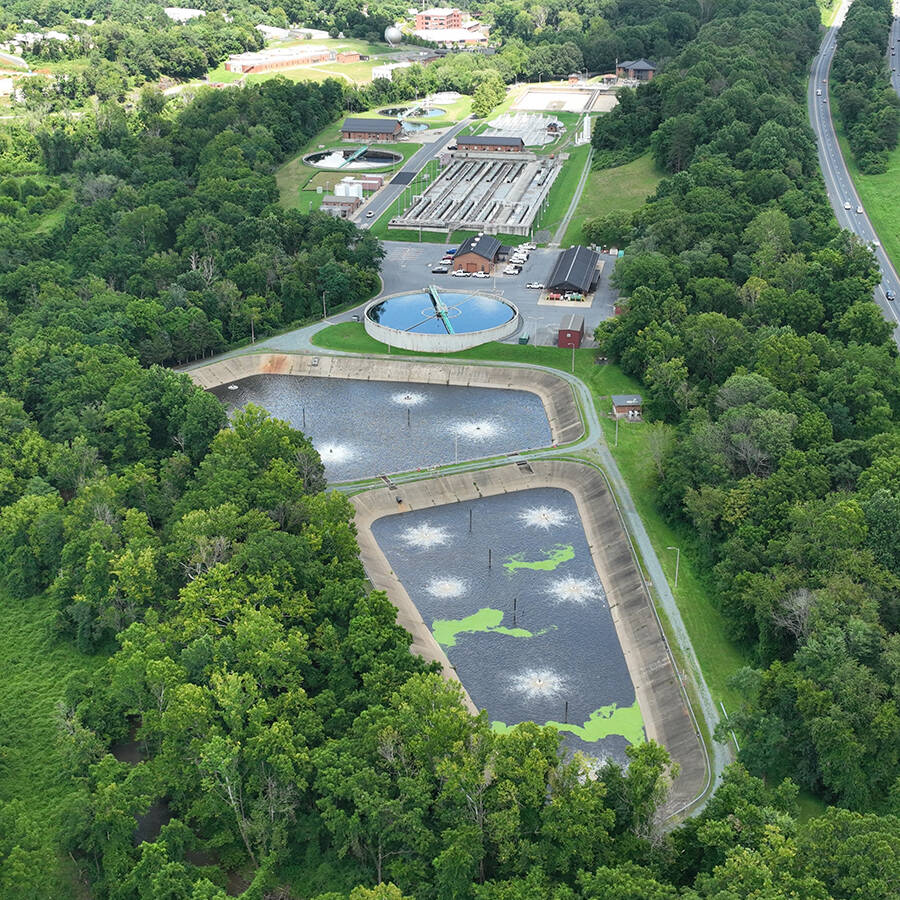
Moores Creek AWRRF
Wastewater Treatment & Water Resource Recovery
In 2014, the Rivanna Water & Sewer Authority (RWSA) renamed its wastewater plants to water resource recovery facilities to highlight its focus on resource recovery.
These facilities return high-quality water effluent to local streams, enhancing aquatic life, and generate renewable energy by burning the gas created when organic waste (like sewage) breaks down.
Rivanna operates four water resource recovery facilities with a total capacity of 15.6 million gallons daily (MGD). These facilities manage wastewater from Charlottesville and Albemarle County, prioritizing efficiency, cost-effectiveness, and environmental care.
Environmental Stewardship
RWSA is a leader in environmental stewardship with a strong record of compliance with Virginia Pollutant Discharge Elimination System (VPDES) permits, issued and reviewed every five years by the Virginia Department of Environmental Quality. Our facilities consistently discharge nitrogen and phosphorus well below permit limits.
Through strategic investments, we ensure safety, reliable service, and the protection of local waterways, including the Rivanna and James Rivers, and the Chesapeake Bay. As a charter member of the Virginia Nutrient Credit Exchange Association, we exceed state requirements for nutrient removal, earning credits to sell on the exchange.
Pictured: Moores Creek Outfall
Sustainability
When we process waste from our water treatment, it naturally breaks down and produces methane gas, which we use as renewable energy.
In 2024, the Moores Creek AWRRF produced over 36 million cubic feet of methane. This methane is produced during the decomposition of organic matter in the digestion process at the facility.
Our boilers heat the wastewater in our digesters. While the boilers can use different renewable fuels, it primarily uses the methane that the plant produces.
Pictured: Boiler at MCAWRRF
Water Resource Recovery Facilities
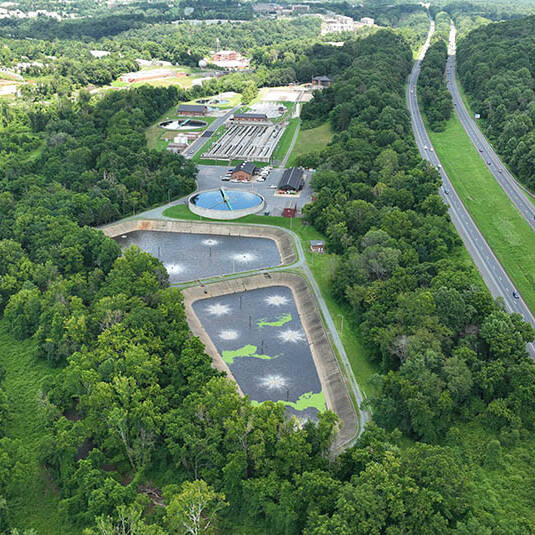
Moores Creek Advanced Water Resource Recovery Facility
Moores Creek Advanced Water Resource Recovery Facility treats wastewater from the City of Charlottesville, Northern Albemarle County, Pantops, and Crozet. The plant is located along Interstate 64.
In fiscal year 2024, the plant treated, on average, 9.8 million gallons of water per day. The treated water is returned to Moores Creek.
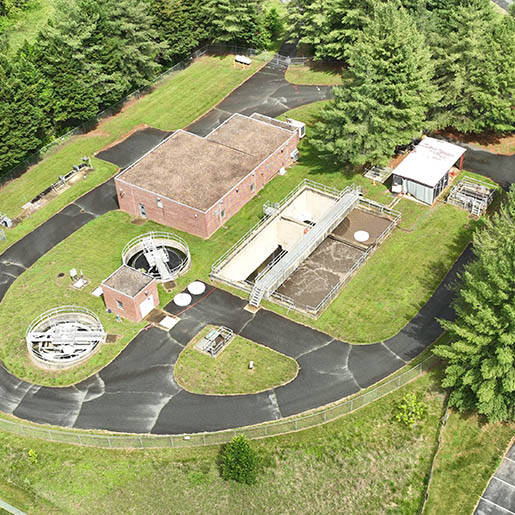
Glenmore Water Resource Recovery Facility
Glenmore Water Resource Recovery Facility treats wastewater from the Glenmore community. The plant is located in the eastern part of Albemarle County.
In fiscal year 2024, the plant treated, on average, 130,000 gallons of water per day. The treated water is returned to the Rivanna River.
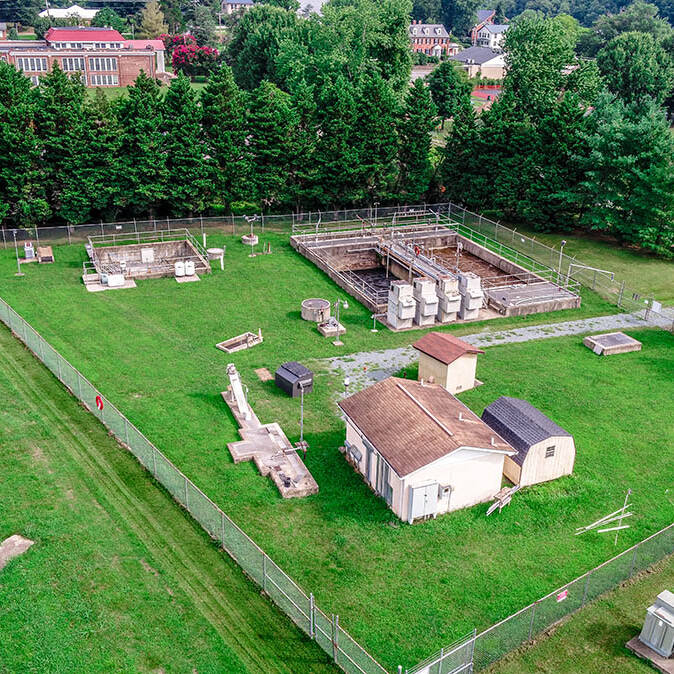
Scottsville Water Resource Recovery Facility
Scottsville Water Resource Recovery Facility treats wastewater from the Town of Scottsville. The plant is located in the Town of Scottsville.
In fiscal year 2024, the plant treated, on average, 65,000 gallons of water per day. The treated water is returned to the James River.
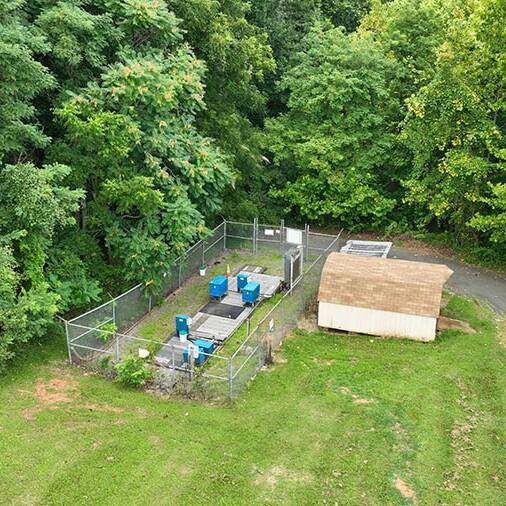
Stone Robinson Water Resource Recovery Facility
Stone Robinson Water Resource Recovery Facility treats wastewater from Stone-Robinson Elementary School. The plant is located in the eastern part of Albemarle County.
In fiscal year 2024, the plant treated, on average, 1,400 gallons of water per day. The treated water is returned to the Rivanna River.
Wastewater and Water Resource Recovery Treatment
Recovery Process
Wastewater treatment removes and eliminates contaminants from wastewater. Treating wastewater is challenging and with improved technology and processes, we are returning safe and clean water to our local waterways.
- Preliminary Treatment: Wastewater passes through screens and a chamber to remove sand, debris, and trash.
- Primary Treatment: Solids settle or float, removing about 35% of organic material and 50% of solids like food waste, oil, and grease.
- Secondary Treatment: Microorganisms break down leftover organics like sugars and proteins.
- Nutrient Removal: Microorganisms remove phosphorus, nitrogen, and ammonia to prevent harmful algae in rivers and the Chesapeake Bay.
- Disinfection: Disease-causing organisms are killed using UV light or chlorine, ensuring treated water is safe for aquatic life.
Wastewater Operators
A typical day for one of our licensed wastewater operators consists of monitoring the local weather conditions and forecast and monitoring various instruments and equipment to ensure operation within proper parameters.
Team members perform several analyses and evaluations to assure that our technology is functioning properly, and our microbiological treatment system is effectively removing pollutants. Team members visually inspect equipment and processes to ensure proper operation.
Significant wet weather events provide additional challenges as storm water enters the sanitary sewer collection system creating some extreme process flow fluctuations. The operating team makes sure that these fluctuations do not negatively impact the environmental balance in our biological treatment processes.
Septage Receiving
RWSA will accept residential and commercial septage and prior-approved commercial/industrial process septage for disposal at the Moores Creek Advanced Water Resource Recovery Facility (MCAWRRF) located in Charlottesville, Virginia.

